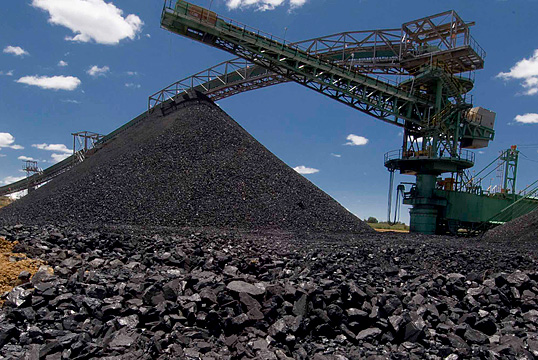Introduction
The existence of clean coal ensures “coal's role in our affordable, low carbon energy future”
– America'sPower.org
“Efforts to promote €˜clean coal' are misguided€¦[and] could increase the output of existing €˜dirty coal' plants and raise CO2 emissions from the electricity sector by 40 to 60% over present days levels by the year 2020€³
– WWF
Image courtesy of Anglo American PLC
Coal is one of the planet’s most abundant fossil fuel energy sources (Schrag, 2009). For this reason, many countries look to coal as a cheap means by which to fuel their economic growth. Also, with 75% of the world’s reserves located in the United States, Russia, China, India and Australia, the largest economies have turned to coal because of its potential for domestic production and, therefore, its ability to increase national energy security (Schrag, 2009). For these reasons, coal currently accounts for 25% of the world energy supply (Chu, 2009) and this percentage has the potential to increase to 30% in the coming years (Haszeldine, 2009). As concern over global warming has increased, however, greater attention has been paid to “clean coal.”
“Clean coal” is an umbrella term which describes a multitude of processes aimed at lowering the amount of greenhouse gas (particularly carbon dioxide) being emitted into the atmosphere. “Clean coal” processes include, but are not limited to: 1) Carbon Capture and Storage (CCS); 2) Integrated Gasification Combined-Cycle systems (IGCC); 3) and chemically washing minerals and other impurities from coal. In recent years, clean coal technologies have been at the center of a political and environmental debate about the direction in which the United States should go in its energy future.
THE “CLEAN” IN CLEAN COAL
While the word “clean” in “clean coal” gives the illusion of an environmentally neutral (or perhaps an environmentally beneficial) system, clean coal systems still depend on the mining of coal which, in itself, requires enormous amounts of carbon to be extracted from the Earth. The most recent form of carbon extraction, called mountaintop removal, requires entire mountaintops to be blasted off allowing the minerals and metals in the rock to pollute the surrounding environment.
Through an assessment of reports and scholarly journal articles, our research will investigate coal extraction and analyze the performance, economics and sustainability of clean coal technologies for carbon capture and emissions reduction.
This blog is part of a research project by three Geography students at the University of Richmond.
